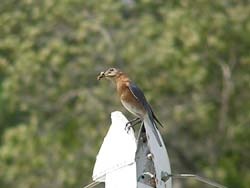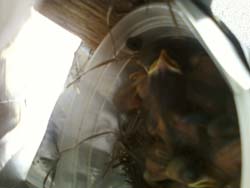 Warmer weather across the country means an increase in flight activity at many airports—and not just by pilots.
Warmer weather across the country means an increase in flight activity at many airports—and not just by pilots.
It’s mating season for birds, and many are out gathering the materials to build a home and settle down. Just as they may pose a hazard to aircraft in the air, their nests could do damage on the ramp. The nooks and crannies in your aircraft—in the cowling, exhaust, and behind control surfaces—are enticing shelter for cavity-nesting birds such as the European starling and the house sparrow, as Bill Knight explains in “Nesting Birds: Their brains are small but their will is strong.” Birds (and mice) can destroy an aircraft’s insulation and wiring; nests and droppings can cause corrosion.
Foam blocks or plugs in inlets and open areas can help deter these industrious creatures from taking up residence inside your craft, but be sure to remove these items before flight. The Air Safety Institute recommends also keeping the flight controls in the neutral position when securing the aircraft to discourage access to open holes in its Aging Aircraft online course.
 Don’t assume that cowl plugs will protect your engine: Some birds will fly in through the low-pressure opening around the exhaust stacks. Once they’ve nested, you may not be able to spot them with a normal preflight inspection; it’s necessary to remove the cowling for a full inspection, writes Dave Hirschman in “ Spring Preflight.” Also, watch for signs of bird activity: A suspicious piece of straw protruding from the lower cowl vent once alerted AOPA to a nest that was built with surprising speed.
Don’t assume that cowl plugs will protect your engine: Some birds will fly in through the low-pressure opening around the exhaust stacks. Once they’ve nested, you may not be able to spot them with a normal preflight inspection; it’s necessary to remove the cowling for a full inspection, writes Dave Hirschman in “ Spring Preflight.” Also, watch for signs of bird activity: A suspicious piece of straw protruding from the lower cowl vent once alerted AOPA to a nest that was built with surprising speed.
Member Pete Giraldez recently shared photos with AOPA of a successful relocation. A family of birds had nested in the rudder of his Cessna 172, so he relocated the nest and the five baby birds; he wrote: “They are happy and so am I to get back to flying.”


